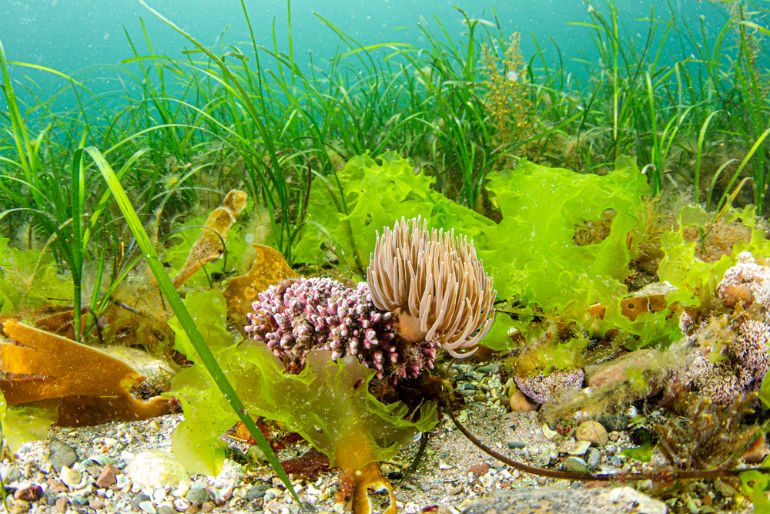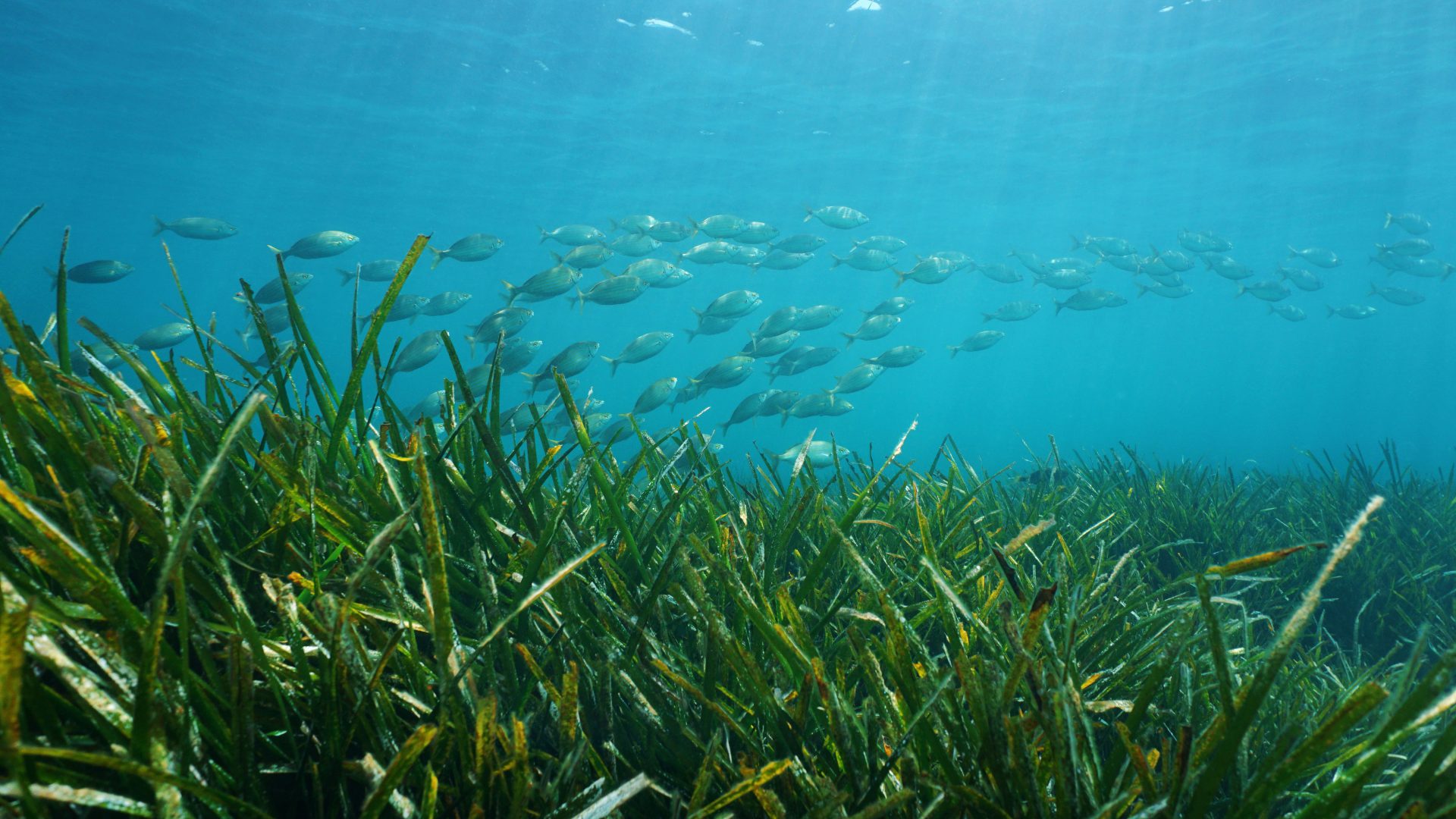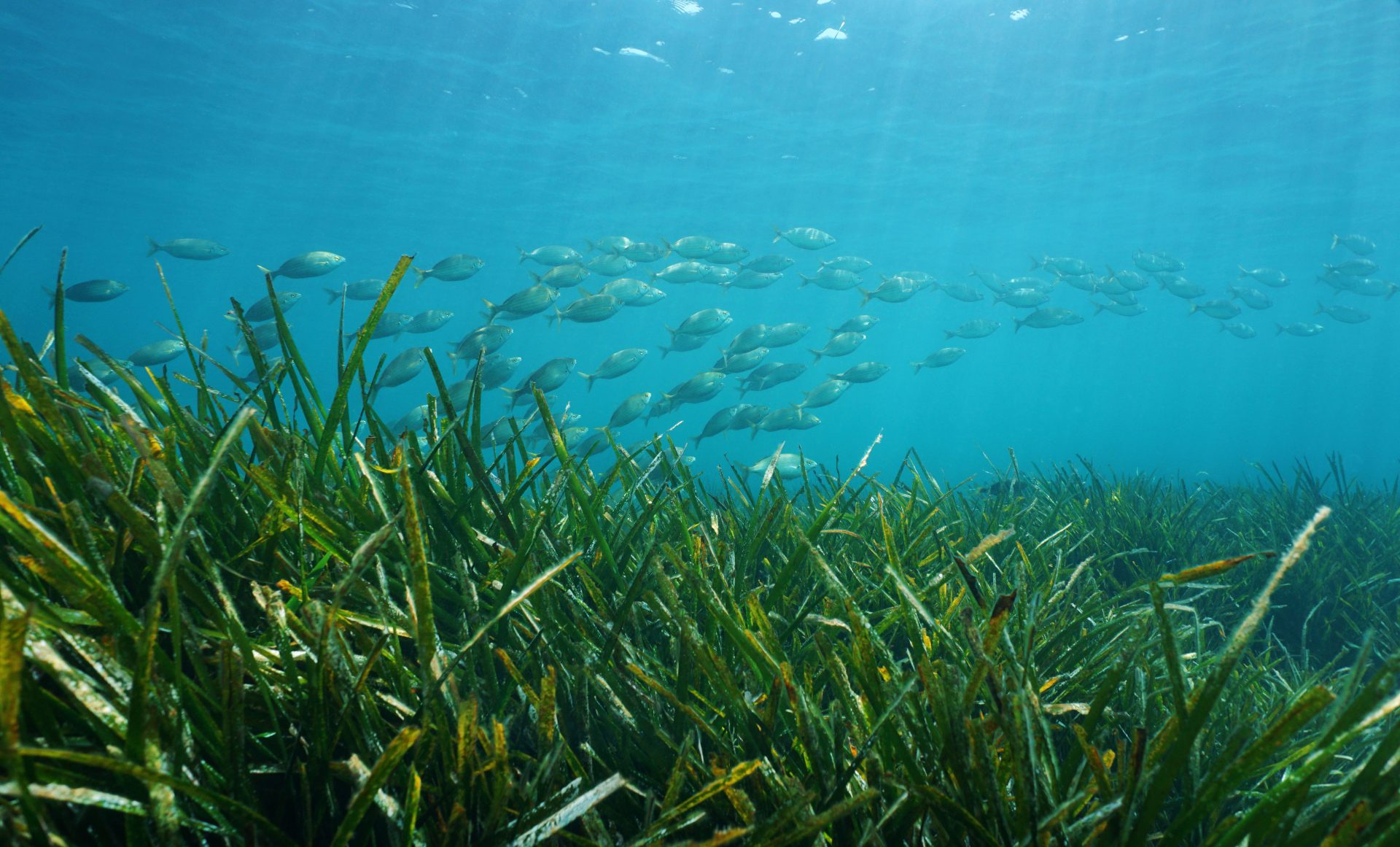Seagrasses provide one of the most environmentally valuable habitats on the planet.
Seagrass meadows are one of the few habitats that provide multiple benefits to our environment. They are thought to be the third most valuable ecosystem on our planet.
Found on every continent except Antarctica, they are the Ocean’s only flowering plant. Seagrasses provide us with oxygen, are nurseries for our fisheries and protect our coasts against erosion. And, perhaps most importantly of all, they absorb carbon up to 35 times more efficiently that a rainforest.
The Challenge

Unlike rainforests, seagrass meadows are largely overlooked despite their global footprint and massive contribution to the environment.
Since the 1930s, 90% of Zostera marina (a temperate species) seagrass beds have been lost. The International Union for Conservation and Nature (IUCN) in 2014 estimated that seagrasses are declining by 7% a year globally. This estimate, if correct, makes it the fastest disappearing habitat on the planet.
The main issue impacting seagrass decline is human activity, particularly destructive fishing practices, coastal development, poorly managed marine activities and pollution.
Whilst continued pressure on the improvement of water quality, reduced pollution and improved habitat management can make a positive difference, our seagrass meadows are not returning back to the condition they were once in, whilst conservation actions have been put in place returning our seagrasses back to good condition will require more pro-active intervention.
What can be done?
With the correct approach, the decline of underwater seagrass meadows can be reversed. Wide scale reforestation would provide a unique solution that would help protect global food security and preserve habitats for iconic and endangered species. Perhaps most importantly, large amounts of additional Blue Carbon would be absorbed in the process, mitigating climate change.
Our Temperate Seagrass Restoration Plan
Seagrass restoration has been shown to be successful in the United States and Scandinavia. These efforts have been tested over many years with many different techniques before a suitable method was found.
The Ocean Conservation Trust, along with its partners, is developing techniques with the aim of large-scale reforestation of temperate seagrass meadows.
To reverse the trend of decline, we must find an efficient large-scale approach to restoration. By approaching restoration efforts on large scale, the likelihood of success is increased.
Key partners in the project include the Royal Botanical Gardens Kew, Plymouth University, the Marine Biological Association, and Natural England.


